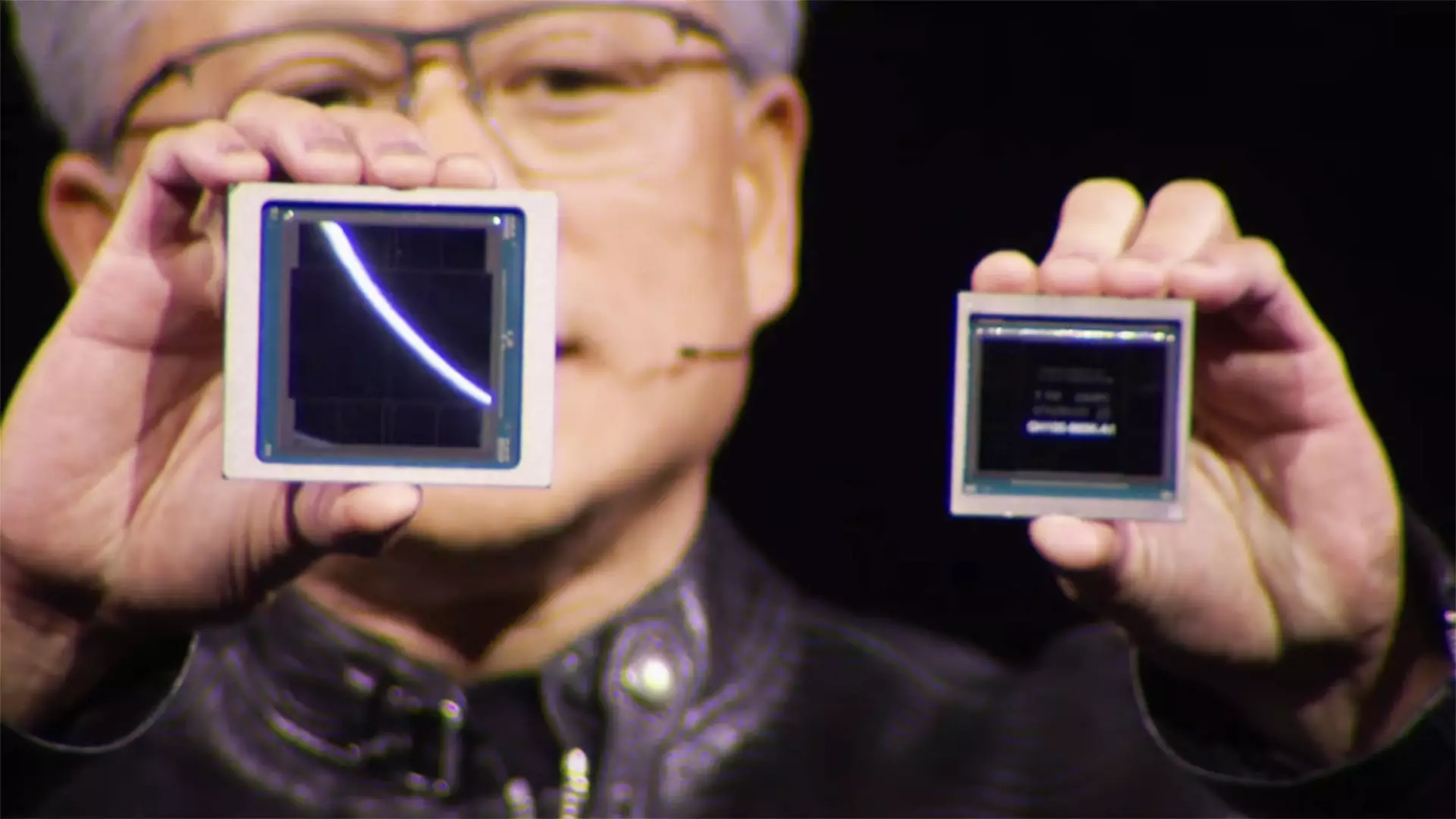In the intricate realm of technology, the ongoing clash between the United States and China finds an unexpected focal point: Nvidia. The semiconductor giant, known for its cutting-edge graphics processing units and a pioneering presence in artificial intelligence, has recently taken a bolder stance against US export restrictions on chips destined for China. Nvidia’s chief scientist, Bill Dally, has openly articulated the repercussions of these restrictions, highlighting a troubling trend: the mass migration of ex-Nvidia AI researchers to Chinese firms, particularly Huawei. This shift raises significant questions not only about talent movement but also about the broader implications for the global tech landscape.
The crux of Nvidia’s argument hinges on a conspicuous statistic: a substantial increase in the number of AI researchers in China. In just a few years, their ranks have swelled from a third of the global total to nearly half. Dally’s assertion, amplified by machine translations of reports emerging from Taiwan, frames the issue as a direct consequence of US regulatory measures—a claim designed to capture the attention of policymakers who might not fully grasp the complexities at play. Nvidia posits that these restrictions compel firms like Huawei to accelerate their own AI developments, a narrative that subtly underscores the potential long-term dangers of isolationist policies.
Financial Fallout: The Cost of Export Restrictions
However, beneath this geopolitical chess game lies a stark financial reality that is equally compelling. Nvidia has not been shy about reporting significant monetary losses directly resulting from these export restrictions. The mention of an expected $8 billion drop in revenue due to lost sales of its advanced H20 chips in the second quarter is startling. Such figures paint a clearer picture: while Nvidia seeks to frame itself as a guardian of technological progress, it is also grappling with the very tangible impacts on its bottom line. The urgency in CEO Jensen Huang’s statements reflects a dual motivation—protecting the company’s market share while also advocating for a more favorable regulatory environment that would allow it to reestablish its dominance.
The counter-narrative from Nvidia also suggests an irony in the technology arms race. While the US government aims to restrict China’s access to advanced technology, the unintended consequence may be a bolstered domestic alternative in the form of companies like Huawei. As they ramp up investment in homegrown technologies, they’re not just catching up; they’re transforming into formidable rivals capable of challenging the status quo. This is a lesson in global economics: prohibitive measures can stimulate local innovation rather than contain it.
Talent Migration: The New Battlefront for AI Expertise
The idea of ex-Nvidia researchers flocking to Huawei serves as a microcosm of a broader dilemma—how intellectual capital navigates geopolitical barriers. Nvidia’s talent poaching concern reflects a real and pressing threat: as AI continues to dictate future technological landscapes, the loss of human resources to competitors is not just a strategic setback but a potential paradigm shift in research and innovation capabilities. It underlines a crucial point: expertise is mobile, and in an interconnected world, it can easily flow to where it is nurtured best, regardless of national borders.
Moreover, the irony of Nvidia’s position cannot be overstated; its own recruitment strategies, particularly in attracting top talent from companies like TSMC in Taiwan with lucrative offers, highlight the complexities of competition in tech. If Nvidia engages in aggressive recruitment, why should it be surprised when it finds itself on the receiving end? This competitive landscape underscores a fundamental principle in business—survival of the fittest often involves both collaboration and competition across traditional divides.
The Future of AI: Navigating Uncertainty
As the technological landscape continues to evolve, the implications of Nvidia’s struggle against the US-China export restrictions will unfold dynamically. The question remains: what will these developments mean for innovation in AI? Nvidia’s warnings may serve to rally sentiment against radical trade policies, but in the face of rapidly growing local alternatives, a new dynamic emerges.
It is undeniable that the rise of Chinese firms in the AI sector poses a significant challenge to the established players in Silicon Valley. Retaining talent is only part of the equation; staying ahead in innovation and production is equally crucial. As Huawei strengthens its AI prowess and increasingly draws upon ex-Nvidia talent, it won’t merely catch up—it could very well surpass established giants. The game of technological supremacy may not be just about chips and exports but about who can attract and nurture talent most effectively in this increasingly competitive world.

